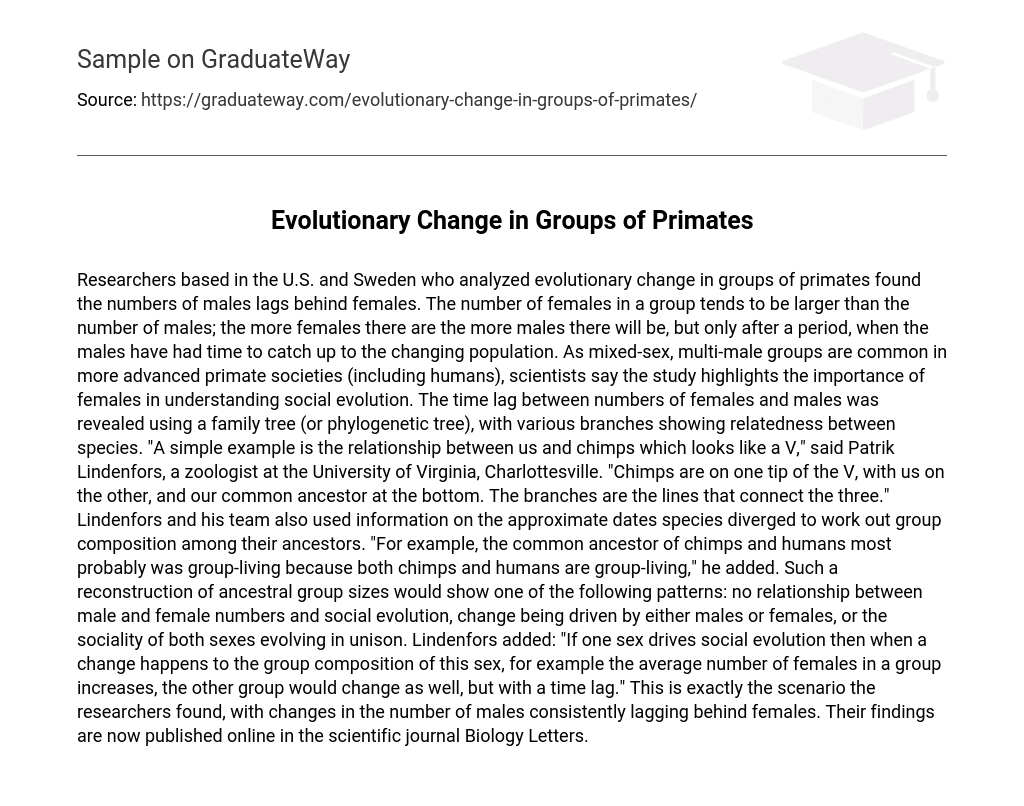Researchers based in the U.S. and Sweden who analyzed evolutionary change in groups of primates found the numbers of males lags behind females. The number of females in a group tends to be larger than the number of males; the more females there are the more males there will be, but only after a period, when the males have had time to catch up to the changing population. As mixed-sex, multi-male groups are common in more advanced primate societies (including humans), scientists say the study highlights the importance of females in understanding social evolution. The time lag between numbers of females and males was revealed using a family tree (or phylogenetic tree), with various branches showing relatedness between species. “A simple example is the relationship between us and chimps which looks like a V,” said Patrik Lindenfors, a zoologist at the University of Virginia, Charlottesville.
“Chimps are on one tip of the V, with us on the other, and our common ancestor at the bottom. The branches are the lines that connect the three.” Lindenfors and his team also used information on the approximate dates species diverged to work out group composition among their ancestors. “For example, the common ancestor of chimps and humans most probably was group-living because both chimps and humans are group-living,” he added. Such a reconstruction of ancestral group sizes would show one of the following patterns: no relationship between male and female numbers and social evolution, change being driven by either males or females, or the sociality of both sexes evolving in unison. Lindenfors added: “If one sex drives social evolution then when a change happens to the group composition of this sex, for example the average number of females in a group increases, the other group would change as well, but with a time lag.” This is exactly the scenario the researchers found, with changes in the number of males consistently lagging behind females. Their findings are now published online in the scientific journal Biology Letters.





